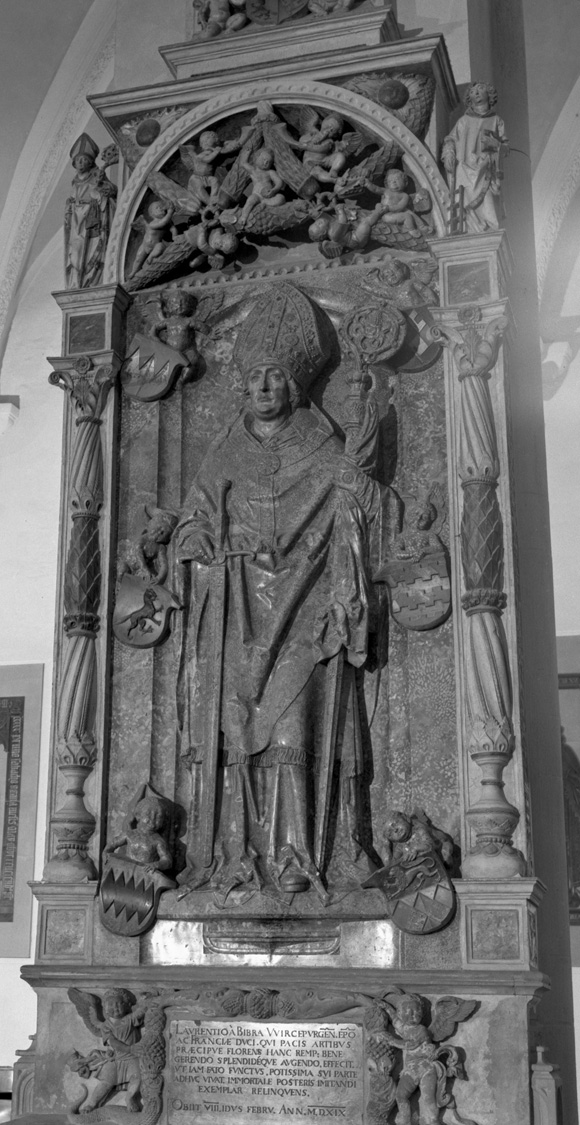Source

Source: Tilman Riemenschneider, sculpture of Lorenz von Bibra, marble, c. 1520. Würzburg Cathedral
Lorenz von Bibra (1459-1519) was born into the Franconian nobility and served as prince-bishop of Würzburg from 1495 until his death. As prince-bishop of Würzburg, he was among the most powerful prince-bishops in the German lands. His friendship with reformer Martin Luther and sculptor Tilman Riemenschneider (1460-1531) suggests that he was receptive to the Reformation. It was Bibra himself who commissioned Riemenschneider to create his funerary monument in the Würzburg Cathedral (shown here). After Bibra’s death, Riemenschneider, a city councilman who went on to become mayor of Wurzburg, became embroiled in a series of political battles with Bibra’s successor. The conflict escalated in the wake of the German Peasants’ War. As a result, Riemenschneider was imprisoned and tortured, stripped of most of his possessions, and prevented from receiving important artistic commissions. He fell into oblivion and was first rediscovered in the nineteenth century.

Source: Tilman Riemenschneider, sculpture of Lorenz von Bibra, marble, c. 1520. Würzburg Cathedral